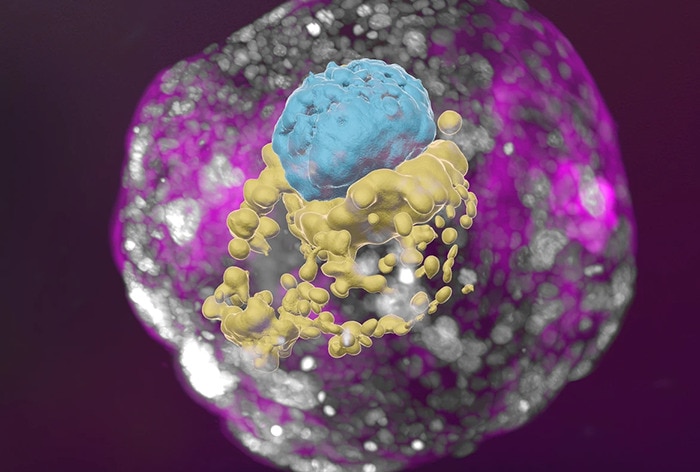Scientists have grown an entity that closely resembles an early human embryo. The entity has been grown without using sperm, eggs, or a womb.
With the advancement of technology and innovative digital solutions, the healthcare industry has drastically evolved. From the first pig-to-human heart transplants to hearing aids, medical science has had tremendous breakouts in the industry. Speaking of which, in a major achievement, scientists have grown an entity that closely resembles an early human embryo. The entity has been grown without using sperm, eggs, or a womb. The researchers at the Weizmann Institute of Science in Israel said their “embryo model”, is made using stem cells. Furthermore, it closely mimics a textbook example of a real 14-day-old embryo.
‘Human Embryo Model’: Know About Weizmann Institute of Science Research
As per the BBC report, the embryo model even released hormones that turned a pregnancy test positive in the laboratory. “The ability to study human post-implantation development remains limited due to ethical and technical challenges associated with intrauterine development after implantation1. Embryo-like models with spatially organized morphogenesis of all defining embryonic and extra-embryonic tissues of the post-implantation human conceptus (i.e., embryonic disk, bilaminar disk, yolk- and chorionic sacs, surrounding trophoblasts) remain lacking,” reads the abstract of the research. The research has been published in the journal Nature.
“These human complete SEMs demonstrated developmental growth dynamics that resemble key hallmarks of post-implantation stage embryogenesis up to 13-14 days post-fertilization (dpf) (Carnegie stage 6a), reads the abstract of the research.
The main significance of embryo models is to provide an ethical way of understanding the earliest moments of over lives. According to the report in Nature, these synthetic embryo models had all the structures and compartments characteristic of this stage, including the placenta, yolk sac, chorionic sac and other external tissues that ensure the models’ dynamic and adequate growth.
From a collection of indistinct cells to something that eventually becomes recognisable on a baby scan – the first weeks after a sperm fertilises an egg is a period of dramatic change. This important time is a major source of miscarriage and birth defects. “It’s a black box and that’s not a cliche – our knowledge is very limited,” Prof Jacob Hanna, from the Weizmann Institute of Science,” was quoted as saying by BBC. “This is really a textbook image of a human day-14 embryo,” Prof Hanna says, which “hasn’t been done before”, BBC reported. Instead of a sperm and egg, the starting material was naive stem cells which were reprogrammed to gain the potential to become any type of tissue in the body.
Weizmann Institute of Science
The Weizmann Institute of Science is one of the world’s leading multidisciplinary basic research institutions in the natural and exact sciences. It is located in Rehovot, Israel, just south of Tel Aviv. It was initially established as the Daniel Sieff Institute in 1934, by Israel and Rebecca Sieff of London in memory of their son Daniel. In 1949, it was renamed for Dr. Chaim Weizmann, the first President of the State of Israel and Founder of the Institute.
Published Date: September 7, 2023 11:01 AM IST
Updated Date: September 7, 2023 11:20 AM IST
–>
–>
